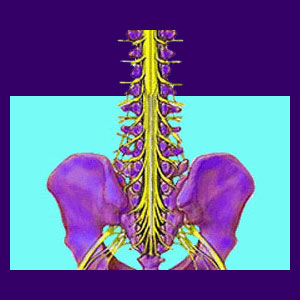
Spinal nerve ablation is usually performed using radiofrequency technology, but can also be achieved using other methods of care such as cryo and thermal therapies. Nerve ablation in all forms is a type of surgical symptomatic care which does not seek to address the underlying pain generating mechanism, but settles for reducing or eliminating the body’s ability to suffer pain from the condition. In essence, no cure is provided for the source of pain, but the pain messages are disrupted and not allowed to register in the brain, providing relief.
Nerve ablation is a direct result of medical science’s inability to recognize and successfully treat the true origin of suffering in most chronic pain patients. If curative spinal surgery was more effective, then nerve ablation would rarely be needed. However, since nerve ablation is a very common practice in the back pain treatment sector, it is clear that most other forms of spinal surgery are grossly ineffectual, which is a fact supported by countless research projects, as well as the clinical experience of thousands of back pain specialists worldwide.
This dialog explores spinal nerve ablation, including the diversity of procedures available, the effectiveness of treatment and the pros and cons of nerve ablation operations.
Spinal Nerve Ablation Techniques
There have been many variations on nerve ablation over the years. Originally, most procedures involved actually severing nerves in order to provide permanent relief for pain, but this treatment came with many unwanted effects, including the possible loss of motor and autonomic functionality and the complete loss of all sensation in some areas of the body.
Procedures evolved to use heat as a means of temporarily or permanently ending nerve transmissions. These thermal nerve ablation techniques were not always precise and often caused collateral damage that was difficult to control.
More modern means of spinal nerve ablation utilize radiofrequency lesioning, cryoanalgesia or other technological methods of temporarily disrupting nerve signals. However, it is still possible for particular nerve tissues to be severed purposefully to provide permanent back pain relief once transient testing for nerve ablation has proven successful.
Nerve Ablation Efficacy
Transient nerve ablation procedures are generally very effective at providing pain relief from messages traveling along the treated nerve. However, this does not mean that they are overly effective for successfully resolving back pain. Most patients have pain that travels along many nerve passageways, allowing symptoms to persist even when several spinal nerves have been “successfully” treated. This occurrence is primarily due to the misdiagnosis of the true source of pain, which has usually been unfairly blamed on some incidental herniated disc or other spinal irregularity.
About half of all treated patients still suffer symptoms immediately following nerve ablation surgery. Of the roughly half of postoperative patients who do receive relief, virtually all will suffer symptomatic recurrence within weeks or months, as the duration of these techniques is not permanent in virtually every case profile.
If the results of treatment are extraordinary and bring complete relief, the doctor might recommend permanent denervation, which should be successful based on temporary positive results of nerve ablation, but unfortunately fails in about 45% of patients, leading to symptomatic recurrence. In these circumstances, it is obvious that the original nerve ablation procedure was nothing more than a surgical placebo and had no enduring efficacy of its own.
Is Spinal Nerve Ablation Right for You?
Nerve ablation can be a good path towards ending pain that has defied other forms of structural treatment. If a condition can not be cured, then at least the procedure can eliminate most of the suffering associated with it in many patients. However, we need to stress that most back pain can indeed be cured, if the diagnosis is actually correct and treatment is targeting the actual underlying source. We tend to recommend patients reconsider their diagnosis before undergoing any symptomatic surgery such as nerve ablation, especially if former structural spinal operations have already failed.
For indicated patients, nerve ablation can be a literal lifesaver, so if several doctors all recommend the technique as the optimal therapeutic path, then it is certainly worth trying, as virtually all surgeries are minimally invasive and have fewer risks than many more common procedures.





